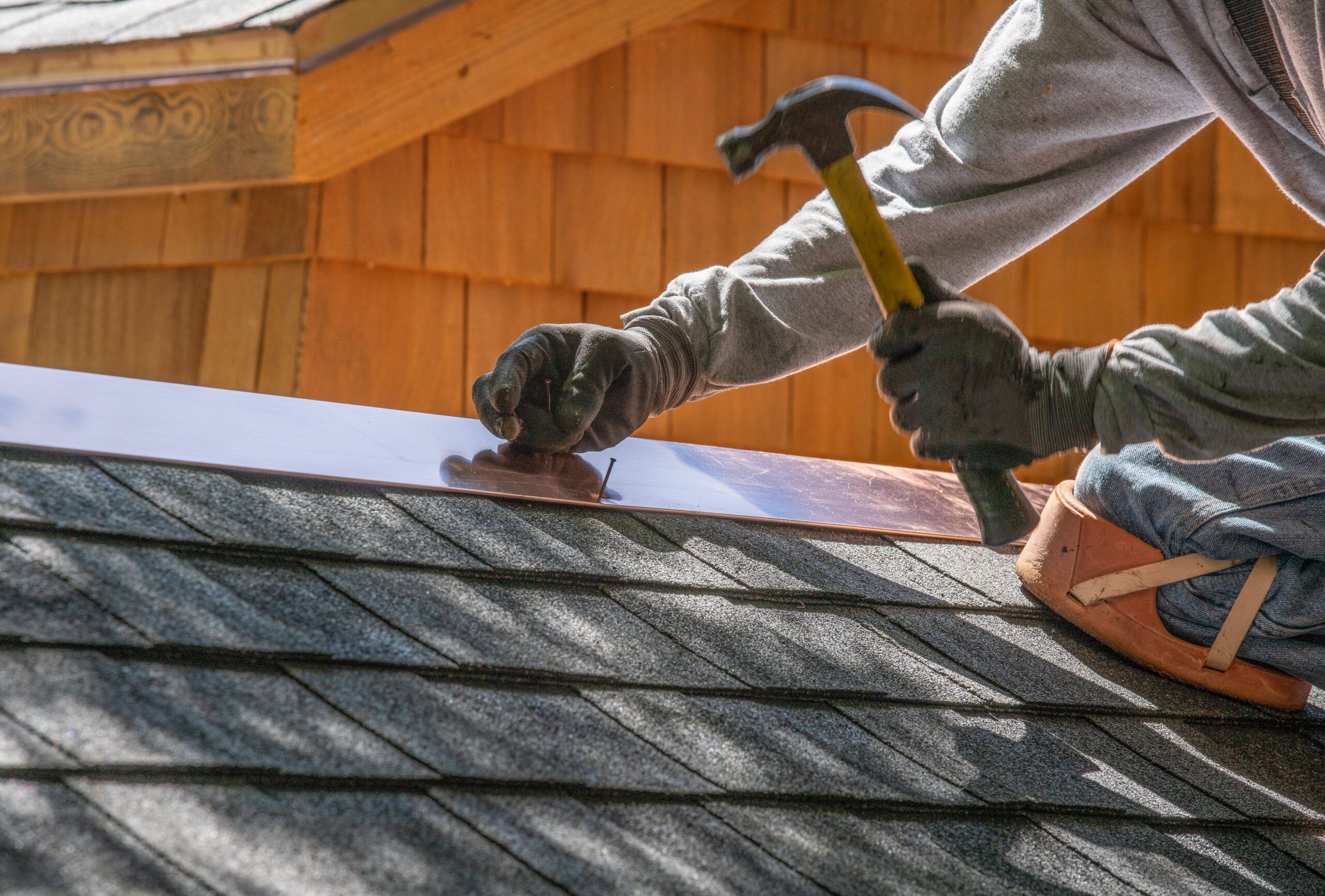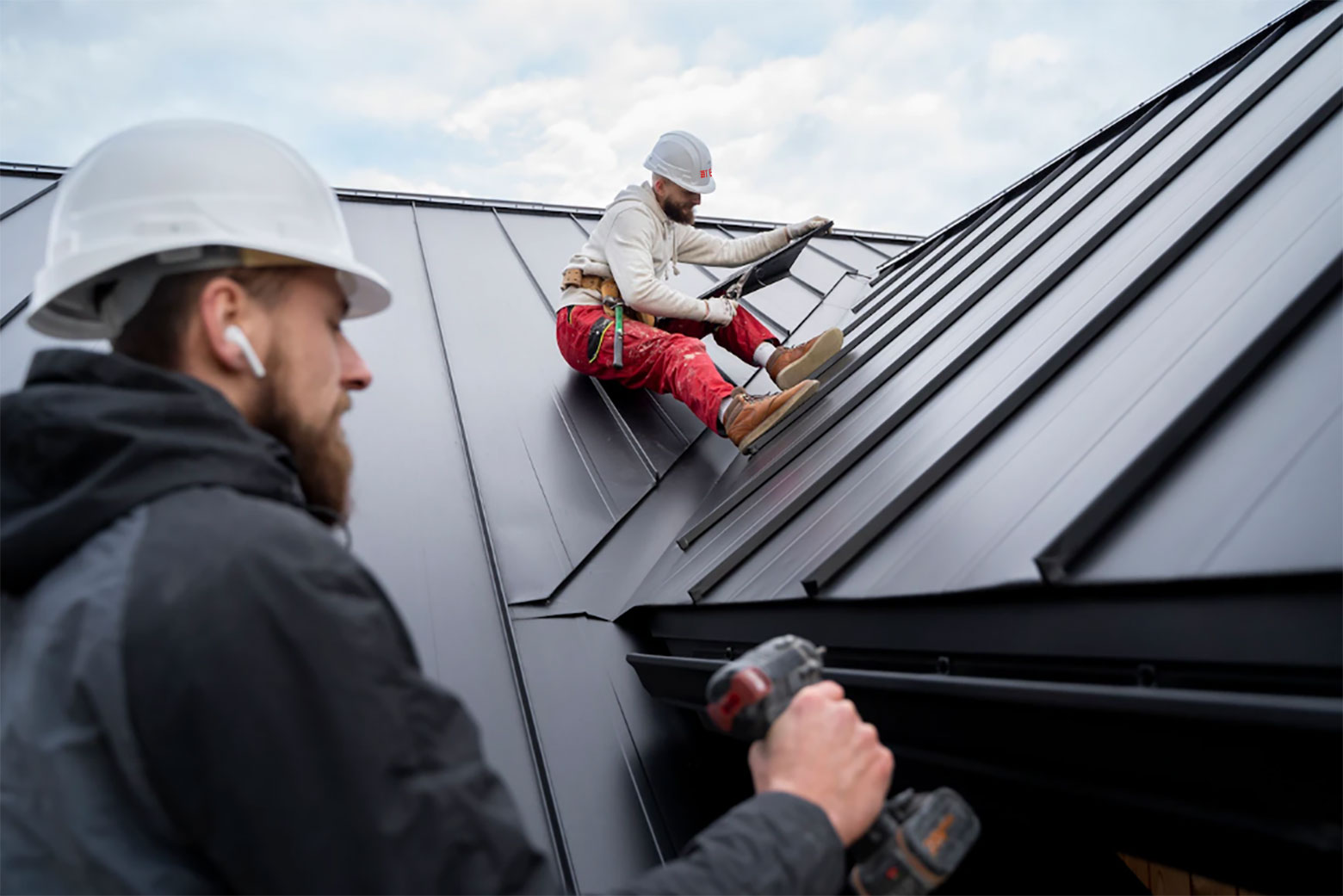Roofers Oahu: Knowledgeable Service Providers for Roof Installations and Repairs
Comprehending the Various Types of Roof Coverings: A Comprehensive Overview for Homeowners
With a range of options-- ranging from the typical gable to the modern flat-- each kind presents special advantages and challenges that need to line up with the house owner's environmental factors to consider and details requirements. As we explore the details of different roofing types, it comes to be obvious that one size does not fit all; the best selection may stun you.
Saddleback Roof
Gable roof coverings, identified by their triangular shape, are among the most preferred roofing designs as a result of their simpleness and effectiveness in dropping water and snow. This design features 2 sloping sides that meet at a ridge, permitting for reliable drainage and decreasing the risk of water buildup. The steep pitch commonly related to saddleback roofs boosts their ability to deal with hefty rainfall, making them suitable for different environments.
In addition to their sensible benefits, saddleback roofs offer aesthetic convenience. They can be adapted to different building designs, from conventional to contemporary homes. The style can additionally suit additional features such as dormer windows, which enhance natural light and ventilation in the attic room room.
Furthermore, saddleback roofs supply enough room for insulation, adding to energy efficiency. Property owners can pick from a selection of roof covering products, including asphalt tiles, steel, and floor tiles, better boosting customization choices.
Regardless of their benefits, gable roof coverings might need extra support in areas prone to high winds or heavy snowfall. Overall, the saddleback roof stays a preferred option because of its blend of capability, longevity, and aesthetic appeal.
Flat Roofs
Level roof coverings are often recognized for their minimalist design and practical applications, specifically in commercial and business settings (oahu roofing). These roofing systems feature a straight or nearly horizontal surface, which permits easy building and construction and functional area usage. While they might do not have the visual charm of angled roofs, level roofings use many advantages, specifically in metropolitan environments where optimizing room is vital
One of the key benefits of level roofs is their accessibility. Home owners can use the roof area for various objectives, such as rooftop yards, terraces, or photovoltaic panel installments. Furthermore, flat roof coverings are normally much more cost-effective to mount and maintain compared to their sloped equivalents, as they require less materials and labor.
Nevertheless, level roofing systems do existing specific challenges. Appropriate water drainage is necessary to prevent water pooling, which can bring about leaks and architectural damages. Thus, choosing high-grade waterproofing materials and routine inspections are vital for making sure durability. Common materials used for flat roofing systems include built-up roofing (BUR), customized bitumen, and single-ply membrane layers, each offering distinctive advantages. Generally, level roof coverings act as a practical and versatile option for several property owners and services alike.
Hip Roofs
Hip roofs are characterized by their sloped sides that assemble at the top, developing a ridge. This design is distinct from saddleback roofs, as all four sides of a hip roofing slope downwards toward the walls, providing an extra stable structure. The angle of the slopes can differ, permitting for convenience in building looks and capability.
One of the primary benefits of hip roof coverings is their capacity to hold up against hefty winds and unfavorable climate condition. The sloped surface areas enable far better water drain, decreasing the risk of leakages and water damage. Furthermore, hip roof coverings use enhanced attic space, which can be made use of for storage or also transformed into livable locations.
Nevertheless, constructing a hip roof covering can be a lot more expensive and complex than less complex roofing system kinds, such as gable roofs. The added material and labor entailed in creating the inclines and making sure appropriate architectural integrity can cause higher costs. Regardless of these disadvantages, several house owners favor hip roofings for their toughness, visual allure, and potential for power performance.
Mansard Roofing Systems
Mansard roof coverings, typically recognized by their i loved this distinct four-sided layout, feature two inclines on each side, with the reduced slope being steeper than the upper. This architectural design, originating from France in the 17th century, is not just cosmetically appealing however practical, as it makes best use of the functional space in the upper floors of a structure. The high reduced slope permits even more clearance, making it a perfect option for attics or lofts, which can be transformed into living rooms.
Mansard roofing systems are defined by their adaptability, suiting numerous architectural styles, from standard to modern-day. They can be created with various products, including asphalt roof shingles, slate, or steel, supplying home owners with a variety of alternatives to match their spending plans and preferences. In addition, the layout permits for the assimilation of dormer home windows, improving all-natural light and ventilation in the top degrees.
Nonetheless, it is necessary to take into consideration the prospective disadvantages. Mansard roofing systems may require even more upkeep due to the intricacy of their layout, and their steep slopes can be testing for snow and rain runoff. On the whole, mansard roof coverings integrate sophistication with practicality, making them a popular choice amongst home owners seeking unique architectural attributes.
Shed Roofs
As home owners progressively seek simpleness and capability in their architectural layouts, dropped roofing systems have become a popular choice. Defined by a single sloping aircraft, a shed roofing system presents a minimal aesthetic that enhances various home styles, from contemporary to rustic.
Among the primary advantages of a shed roof is its uncomplicated building, which usually equates to reduce labor and product costs. This design permits effective water drainage, minimizing the danger of leaks and water damages. Furthermore, the vertical incline gives enough space for skylights, enhancing natural light within the interior.
Lost roofs additionally supply flexibility in terms of use. They can be efficiently incorporated into enhancements, garages, or exterior structures like sheds and structures. Furthermore, this roofing design can fit various roofing products, including metal, the original source asphalt shingles, or also environment-friendly roofing systems, lining up with eco-friendly efforts.
Nevertheless, it is important to take into consideration regional environment problems, as heavy snow lots may require modifications to the roof's angle or structure. On the whole, lost roofings offer a functional and cosmetically pleasing alternative for property owners aiming to make best use of capability without compromising style.
Conclusion


Gable roof coverings, defined by their triangular shape, are amongst the most preferred roofing designs due to their simplicity and efficiency in losing water and snow. oahu roofing. The steep pitch commonly linked with gable roofs boosts their ability to handle heavy rainfall, making them appropriate for different climates
While they might lack the visual charm of pitched roofs, flat roof coverings provide numerous benefits, particularly in city environments where making the most of area is important.
